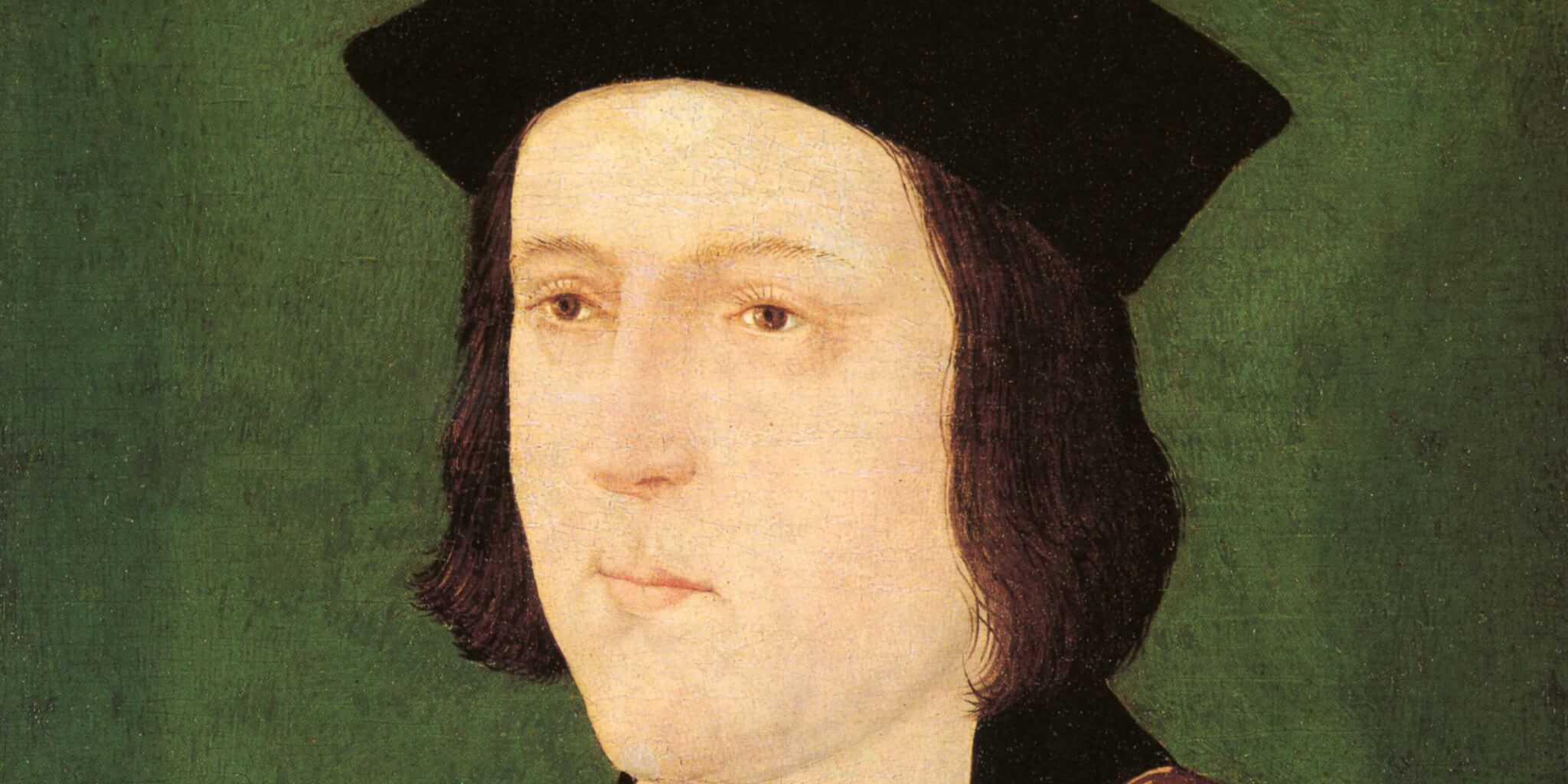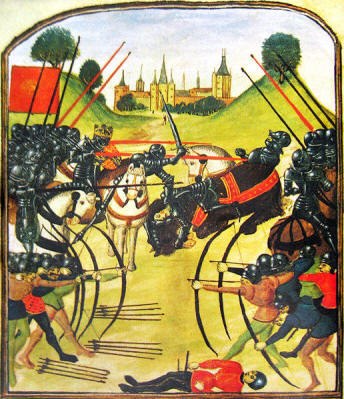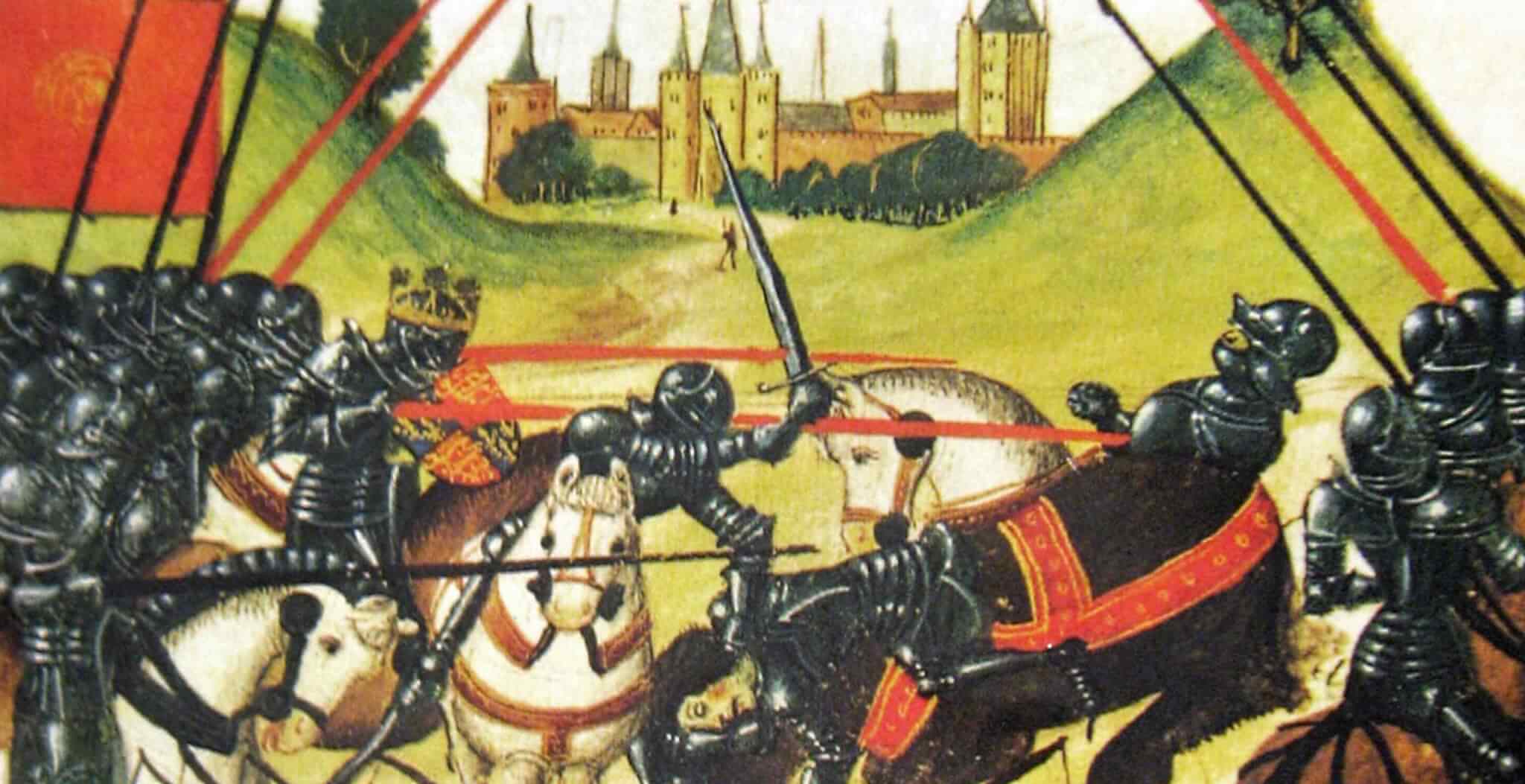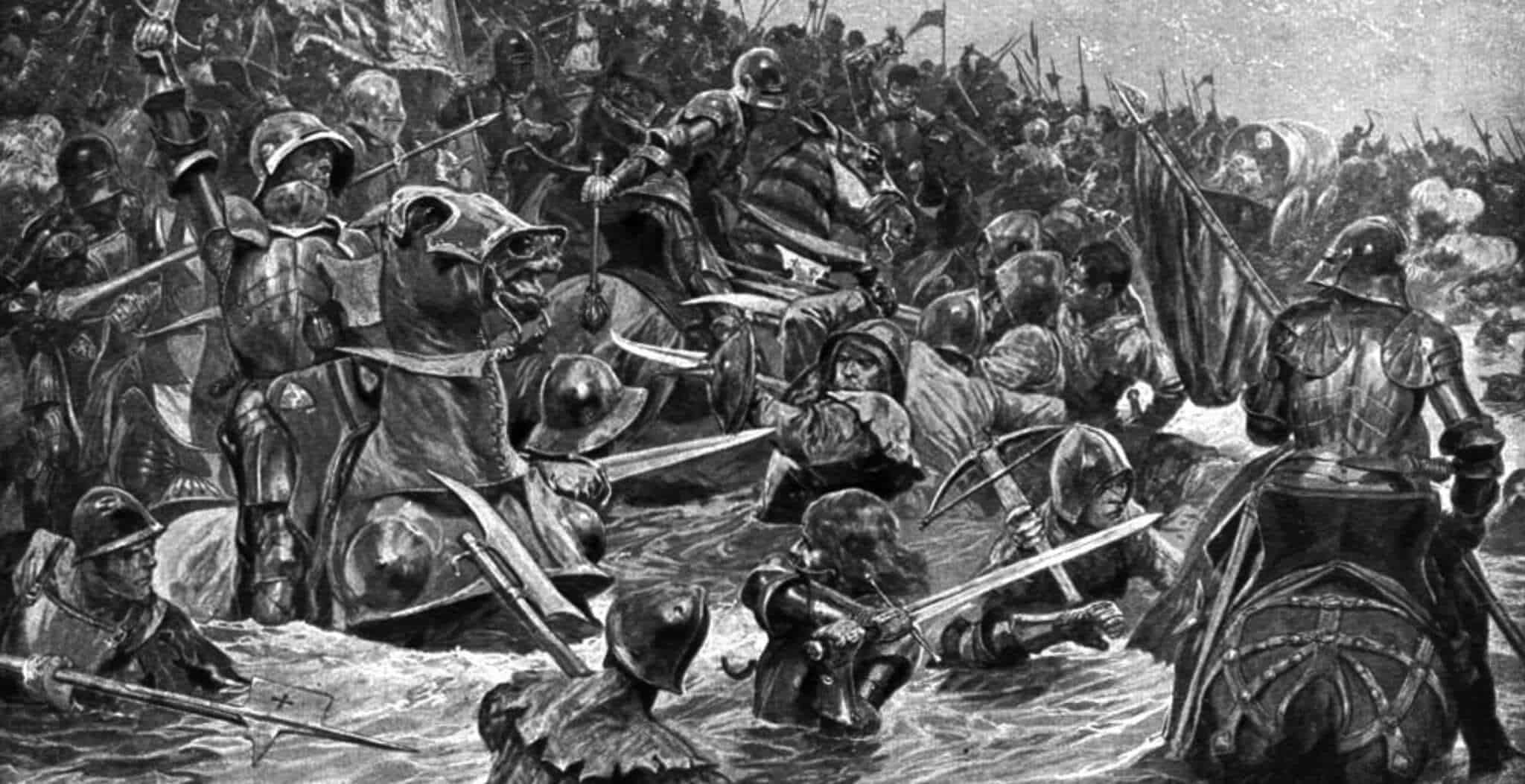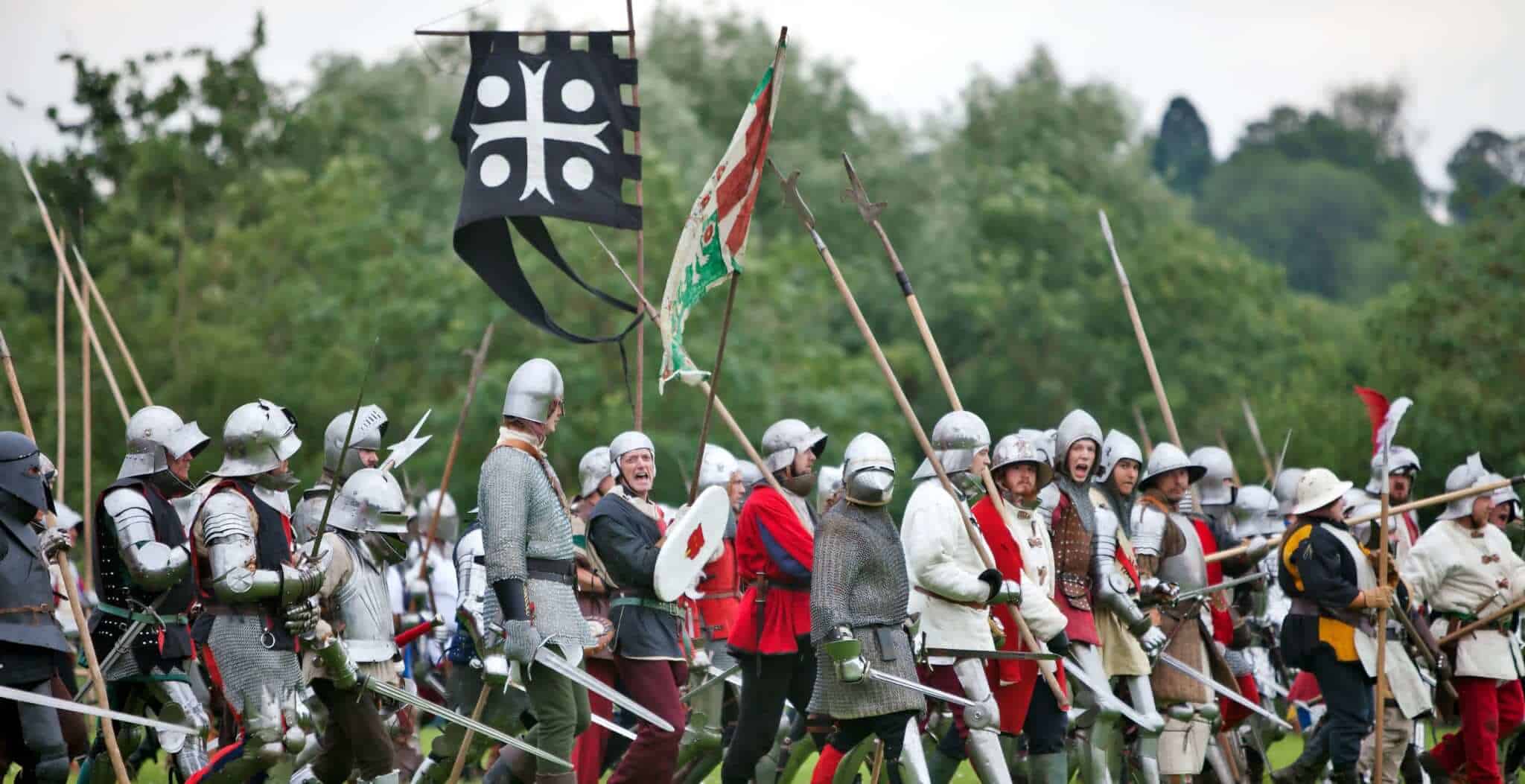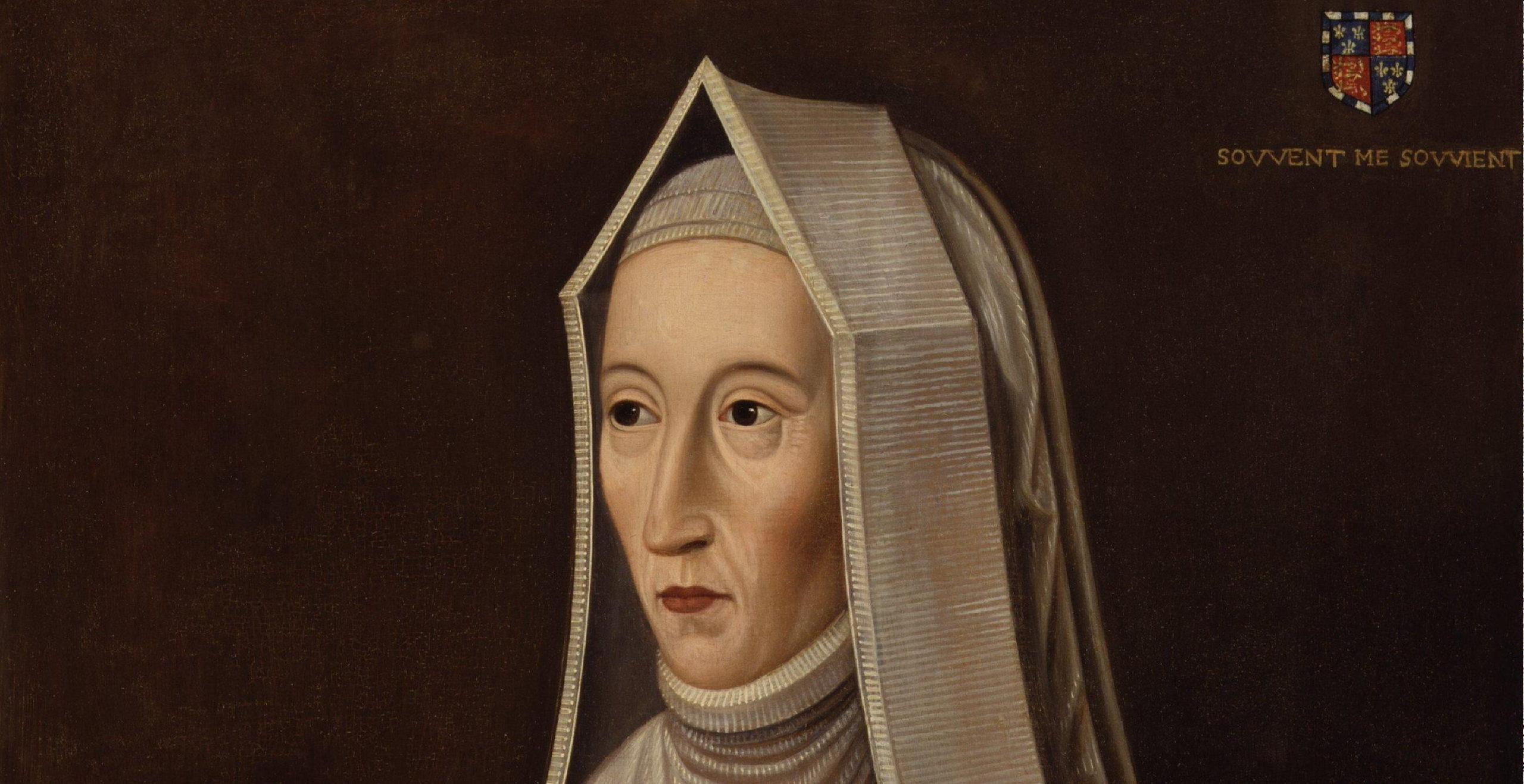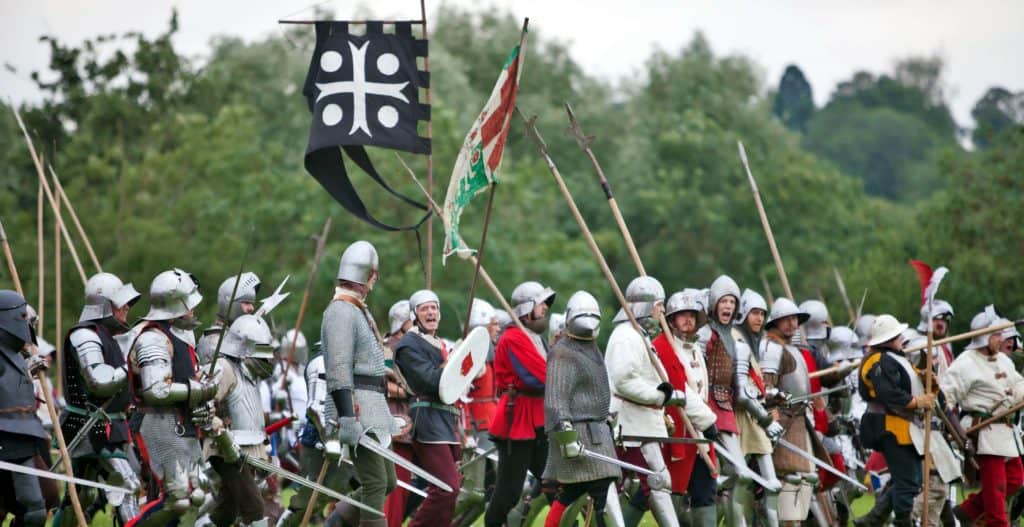The year 2011 marked both the 550th and 540th anniversary of the coronation of King Edward IV (1442-1483).
Edward IV was born to Richard, Duke of York and Cicely Neville, daughter of Ralph Neville, 1st Earl of Westmorland and Joan Beaufort Countess of Westmorland, on 28th April 1442 in Rouen, Normandy.
Edward’s family belonged to the House of Plantagenet, and his ancestors had sat on the English throne since 1154. However, the house had split into two opposing factions – the House of Lancaster and the House of York – both keen to claim the throne for themselves. Whilst the Lancastrians had ruled since 1399, Henry VI’s weak rule and subsequent mental illness prompted Edward’s father, as a descendent to Edward III via the Yorkist branch, to pursue his own claim to the throne in 1455.
Richard’s opposition to the Lancastrians was the cause of the famous civil wars between the two houses, known as the War of the Roses because of the emblems of each house (a red rose for the Lancastrians and a white rose for the Yorkists), which continued periodically through a series of fierce, bloody battles for the next 30 years.
On 25th October 1460, the English Parliament passed the Act of Accord, which stated that Henry VI should remain King for the rest of his life, but that Richard and/or his heirs would succeed Henry to the throne. This was prompted in no small part by the symbolic gesture of Richard forcing his way into the Royal Court and laying his hand on the empty throne of England fifteen days previously. Henry had fled to go into hiding.
However The Act of Accord was by no means the cause of a cease fire between the warring houses. Protective of the rights of her young son Edward of Westminster, Prince of Wales, Henry’s wife, the strong-willed Queen Margaret and her supporters were in fierce opposition to the act. When Richard and his youngest son Edmund were killed in pursuit of the crown at the Battle of Wakefield on 30th December 1460, his father’s claim to the throne passed to Edward as the eldest of Richard’s four sons.
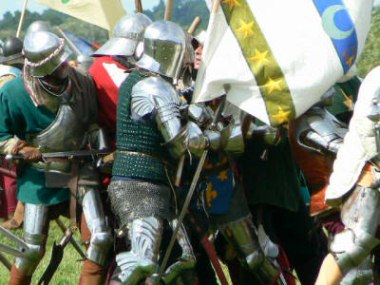
Battle of Towton and Edward’s ‘first’ reign as King (4 March 1461 – 3 October 1470)
Having imprisoned the ineffectual Henry in March 1461, Edward and his supporters faced a formidable army raised by Margaret and the Lancastrians at the Battle of Towton, a small Yorkshire village, on 29th March 1461. Whilst Edward had gathered support from those nobles who were furious that Margaret had so openly defied the Act of Accord, the Yorkists were still heavily outnumbered. In the largest, bloodiest battle to take place during the War of the Roses, it was reputed that over half of the 50,000 Yorkist and Lancastrian soldiers lost their lives.
In the end, Edward’s men were only able prevail in the battle when the Yorkist archers used the strong winds caused by the overhead snow storm to outdistance their opponents and eventually clinch victory, with Edward forcibly seizing the throne from the fleeing Henry. He would remain on the throne for the next nine years.
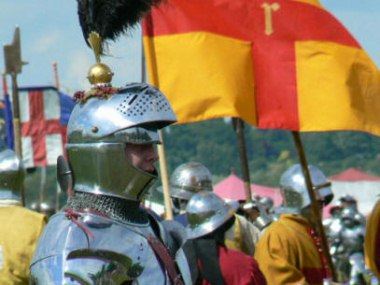
A King overthrown
Whilst Edward had successfully claimed the throne, Margaret was still determined that Henry or his son should be reinstated as King. The Queen had been initially exiled to Scotland but following her move to France – and aided by King Louis XI – she hatched a plot to overthrow Edward with the unlikely allegiance of Edward’s previously staunch supporter, Richard Neville, Earl of Warwick.
Warwick’s initially strong bond with Edward had deteriorated throughout the latter’s reign, particularly when Edward married Elizabeth Woodville, the widow of a Lancastrian supporter, rather than a queen of Neville’s choosing. Edward’s younger brother George, Duke of Clarence, was also recruited to the cause when his father-in-law Neville promised that he would be next in line to the throne after Edward of Westminster, should he support the Lancastrians against his brother.
However, Neville had his own agenda for the throne and after marrying his daughter to Edward of Westminster he managed to overthrow his fellow Yorkists with the support of Margaret’s army, allowing Henry VI to reclaim the throne on 30th October 1470, which sent Edward into hiding. The weak King Henry left Neville to essentially rule on his behalf.
The Battles of Barnet and Tewkesbury and Edward’s ‘second’ reign (11 April 1471 – death)
Henry’s restoration to the throne was unsurprisingly brief. Having unwisely provoked a war with Burgundy, the current Duke of Burgundy, Charles the Bold, resolutely sided with Edward and provided the support he needed to reclaim his throne less than six months later.
With the support of Charles, his brother Richard, Duke of Gloucester and the once again ‘loyal’ George, Edward achieved a resounding victory at the Battle of Barnet, which was then a small town north of London, on 14th April 1471. It was here that Warwick fell, and less then a month later Henry’s son and heir, Edward of Westminster, was killed in action at the Battle of Tewkesbury on 4th May.
Having lost his protectors, the imprisoned Henry is said to have died of melancholy, a deep sadness and despair, shortly afterwards on 21st May 1471. However, historians have argued that it is entirely probable his death was ordered by Edward IV once the threat of a stronger Lancastrian claimant, Edward of Westminster, had subsided.
And what of Edward’s brother George? Having realised his mistake and rejoined his older brothers Edward and Richard (Edward’s eventual successor) to defeat the Lancastrians at Barnet, he was nevertheless tried for treason against the newly restored King and was executed in private at the Tower of London on 18th February 1478. The widely held belief that George was drowned in a casket of Madeira wine (also purported to be true by Shakespeare in his plays Henry VI and Richard III) was thought to be a humorous reference to the fact that George was fond of a drink or two. However, the exhumation of a body believed to be that of George showed that he had not been beheaded, the most common means of execution for a noble of his position in the fifteenth century, so his demise may indeed have been merrier than most at the time!
Edward’s restoration to the throne meant he became only the second British Monarch to sit on the throne twice (ironically, the first being of course Henry VI), making 2011 simultaneously the 550th and 540th anniversary of his coronation. In contrast to his initial rise to the throne, Edward did not face any rivals for the crown during the latter half of his reign and despite warring with France and Scotland, the remainder of his rule was relatively peaceful. Indeed Edward became one of the few male members of his lineage to die from natural causes when he passed away on 9th April 1483 of an undiagnosed illness supposed to be either pneumonia or typhoid.
 Overview of Edward the King
Overview of Edward the King
Perhaps ironically, given that he came to power on the battlefield, Edward’s greatest achievement as King was to restore a sense of order to a country and government which had lost its sense of purpose during the chaotic and undisciplined days of Henry VI’s rule. Indeed his chosen royal motto was the Latin modus et ordo, which translates to method and order. By no means the perfect King – he was known to misjudge a number of political situations, particularly in relation to his duplicitous rival the French King, Louis XI – Edward will be remembered most famously as a successful military commander and the first Yorkist claimant to the throne to reign as King. Interestingly, he was also a flourishing businessman who had invested within the City of London’s most successful ventures.
The final War of the Roses and a new royal house
Unfortunately the Yorkist dynasty was to outlive Edward for only two years. Edward’s son Edward V reigned for a very brief three months at the young age of thirteen before he and his younger brother, Richard of Shrewsbury, 1st Duke of York, were moved to the Tower of London and famously disappeared without a trace less than a year after Edward had died. Whilst rumours have circulated about their apparent demise over the years, the true reason for their disappearance (purported to be by order of their Uncle and ‘Protector’ Richard, Duke of Gloucester) has never been discovered. The next (and last) Yorkist to take the throne was Edward’s youngest brother Richard III, who was killed at the Battle of Bosworth near Leicestershire in 1485, thus also becoming the last of the Plantagenet kings.
The English throne was then to pass to Henry Tudor, a Welsh claimant of distant relation to Edward III and son to Henry VI’s half brother Edmund, who became the last British King to claim the throne on the battlefield. However, to appease his predecessors King Henry married Edward IV’s eldest daughter, Elizabeth of York. The War of the Roses was finally over and so began the reign of the infamous house of Tudor, who continued to rule England and Wales for the next 117 years.
